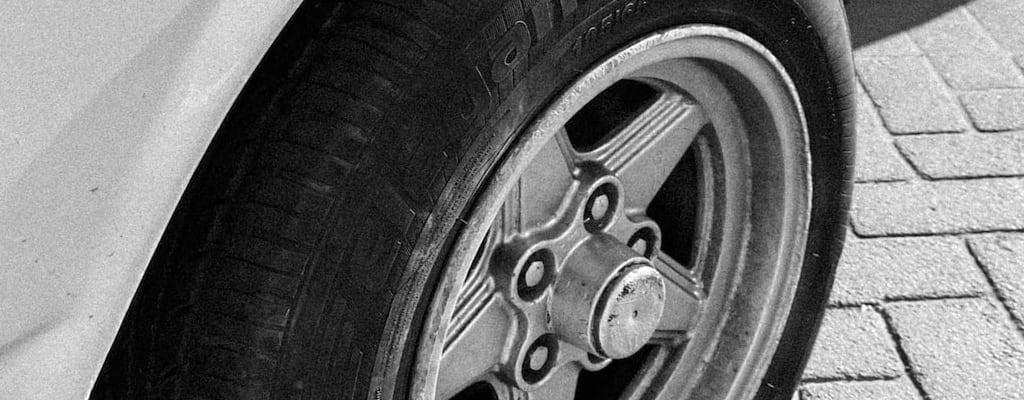lay rubber: Idiom Meaning and Origin
What does ‘lay rubber’ mean?
Lay rubber is an idiom that means to drive a vehicle very fast, causing the tires to leave skid marks on the road due to the sudden acceleration. It is usually used in contexts where someone wants to emphasize the speed and power of a vehicle.

Idiom Explorer
The idiom "lay over" means to have a temporary stop or stay during a journey before continuing on to another destination.
The idiom "lay on" means to apply or administer something, usually in a forceful or excessive manner. It can also refer to providing or giving something, often in a generous or lavish way.
The idiom "lay it on thick" means to exaggerate or overdo something, especially when expressing emotions or flattery, in order to create a stronger impact or influence on someone.
The idiom "lay eggs" means to produce or create something, often used to describe the act of generating new ideas, inventions, or solutions.
The idiom "kick some tires" means to inspect or evaluate something, typically a product or a potential deal, before making a decision. It implies a thorough examination or assessment to ensure reliability or quality.
The idiom "in the fast lane" means to be living or working at a fast pace, often associated with a busy or exciting lifestyle full of activity and success.
The idiom "hit the road" means to leave or start a journey. It suggests the action of physically hitting a road to begin a trip or adventure.
The idiom "hit the pavement" means to go outside and start walking or running. It is often used to indicate someone taking action or making an effort.
The Reveal of "Lay Rubber"
First used in the mid-20th century, the idiom "lay rubber" is primarily American in origin, with some usage found in British English as well. It is rooted in automotive slang and refers to the act of accelerating a vehicle so quickly that the tires leave skid marks on the pavement.
Drivers of powerful cars, particularly those with high-performance tires, often engage in this behavior to demonstrate the speed and power of their vehicles. When they want to show off, they accelerate rapidly, causing the wheels to spin and the tires to lose traction momentarily. This results in tires squealing and leaving visible marks on the road surface. This action is commonly known as "laying rubber."
The phrase "lay rubber" gained popularity in the mid-20th century due to the rise of street racing and car culture in the United States. It was frequently used to describe the act of showing off a car's performance capabilities by leaving skid marks on the road. Street racing became particularly prevalent in the 1950s and 1960s, with young drivers emphasizing the power and speed of their vehicles. "Laying rubber" became a prominent phrase associated with such racing maneuvers.
Over time, the meaning of "lay rubber" has expanded beyond its original automotive context. It can now be used metaphorically to indicate swift acceleration or taking off quickly in any situation, not necessarily related to driving. The phrase is often used colloquially to depict fast departures or actions, emphasizing the idea of speed and immediacy.
While primarily an American idiom, "lay rubber" has also been adopted to some extent in British English, especially in the context of car culture and street racing. Its association with American movies, TV shows, and popular culture has contributed to its recognition and usage in the UK.
The idiom "burn rubber" is closely related to "lay rubber." It shares the same meaning - the act of accelerating a vehicle so quickly that the tires leave skid marks on the road. Both phrases describe the action of demonstrating a car's speed and power. "Burn rubber" is often used interchangeably with "lay rubber" to convey the same idea.
"floor it" is another idiom related to "lay rubber." It means to push down the accelerator pedal of a vehicle all the way to the floor, in order to achieve maximum acceleration. When someone says "floor it," they are urging the driver to accelerate rapidly and forcefully, resulting in the tires potentially leaving skid marks on the road.
"hit the gas" is a phrase similar in meaning to "lay rubber." It means to press the accelerator pedal of a vehicle firmly and quickly, causing the vehicle to accelerate with great speed. Just like "lay rubber," "hit the gas" connotes quick acceleration and potential skid marks left on the road.
"23 skidoo" is an idiom that refers to swiftly leaving a place or situation. It originated in the early 20th century and was often used to urge someone to move along quickly. While not directly related to "lay rubber," the phrase conveys a similar sense of speed and immediacy, which can be associated with the act of rapidly accelerating a vehicle and leaving skid marks on the road.
"lay rubber" is an idiom rooted in automotive slang, specifically associated with the act of accelerating a vehicle so quickly that the tires leave skid marks on the road. It originated with the rise of street racing and car culture in the mid-20th century and has since expanded to encompass swift acceleration or quick departures in any context. While primarily American, the phrase has also gained some recognition in British English. The idiom captures the spirit of speed and immediacy, and its usage continues to endure among language speakers today.
Example usage
Examples of how the idiom "lay rubber" can be used in a sentence:
- Tom's car sped off from the traffic light, laying rubber on the road.
- The motorcycle took a sharp turn and laid rubber on the pavement.
- When John accelerated his sports car, it laid rubber on the highway, leaving black skid marks.
More "Transportation" idioms



